Apple Mac mini Review (Mid 2010)
by Anand Lal Shimpi on August 9, 2010 3:37 AM ESTSpin the mini
Apple has done away with conventional feet and instead the mini rests on a circular pedestal. The circular base doubles as an access port to the internals of the mini.
The removable cover has two indentions that you put your fingers in. A counter clock-wise twist (about 1/16th of a rotation) will unlock the cover. Removing it reveals the only easily user replaceable components in the mini: the DDR3 SO-DIMMs.
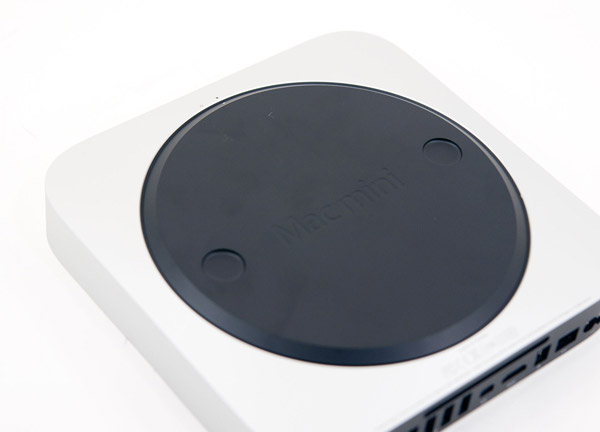
The $699 configuration comes with two 1GB DDR3-1066 sticks. Woefully inadequate for today’s workloads, particularly since the mini only comes with a 5400RPM 2.5” HDD so any swapping to disk is painfully slow.
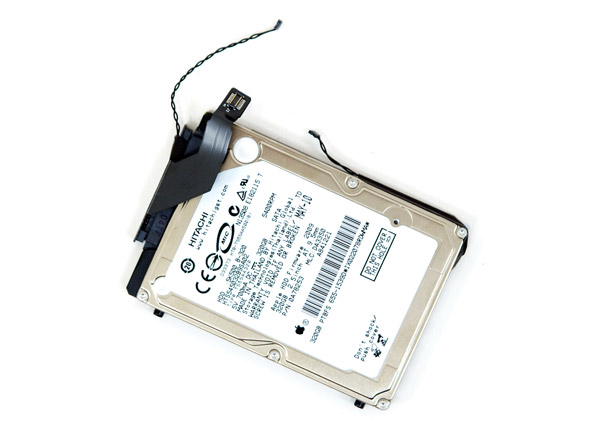
The 2.5" Hitachi 5K500 5400RPM HDD
Replacing memory is as easy as can be on the Mac mini, just remove the cover, pop out the sticks and install new ones. It’s just like a notebook, but easier.

Upgrading the hard drive is much more complicated unfortunately. To get it out you have to remove the motherboard, which isn’t hard but definitely not easy. iFixit has a guide here.
Start by removing the four screws that hold the WiFi antenna in place. Don’t forget to disconnect the antenna cable once you’ve done so.
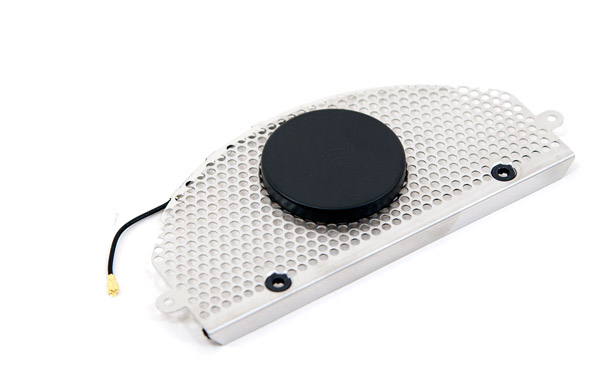

The entire system is cooled by a single fan that channels air through a shroud over a heatsink with a pair of heatpipes. Remove the fan screws, remove the shroud, remove the heatsink screws and then unscrew everything you see on the motherboard and you’re half way there.
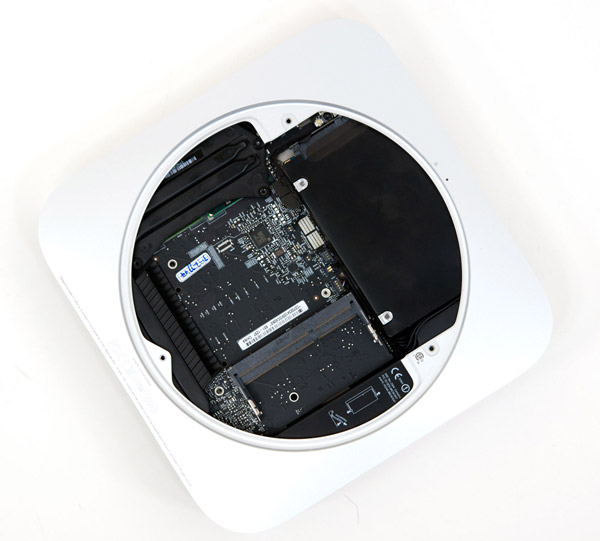
Disconnect all of the temperature sensors and cable connectors from the back of the board and you can finally slide the board out. Unfortunately there’s no easy way to grab onto the motherboard itself so you’re better off sticking two thin screwdrivers through the two open holes in the motherboard and using them to pull the board out of the chassis.
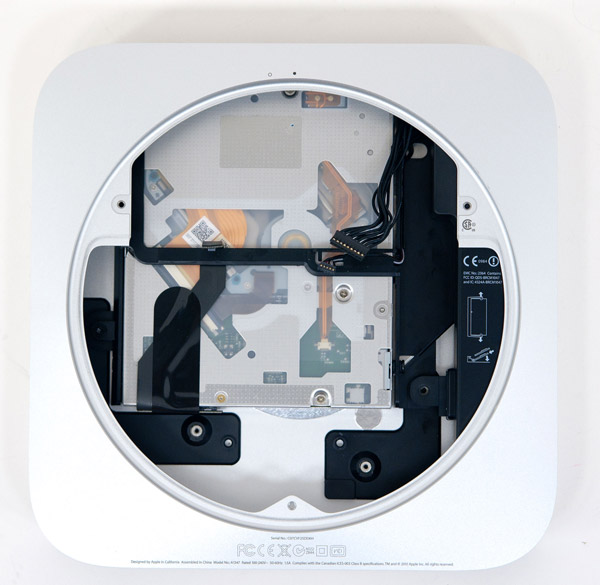
The mini minus a motherboard and HDD
When you’ve done that you can pry the HDD out of its resting spot, unplug its cable and replace it. Ugh.
With the motherboard out we can remove its heatsink and get a bit more personal. Down to the screws in the system, the Mac mini is very much a headless notebook:
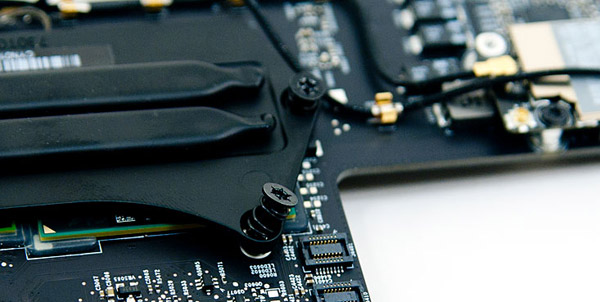
These spring loaded screws are common on notebook heatsinks

Underneath the heatsink we have the two chips that make up the Mac mini: Intel's Core 2 Duo P8600 (right) and NVIDIA's GeForce 320M (left):

The 320M has the graphics, memory controller, SATA controller, PCIe and USB interfaces. Looking at the size of the die you can see how highly Apple values the GPU over the CPU in a system like this. Ten years ago you'd be looking at a four-chip solution (CPU, North Bridge, South Bridge, GPU), today we're down to two. Soon enough we'll be able to have a single SoC that delivers the functionality and performance of these two discrete chips.
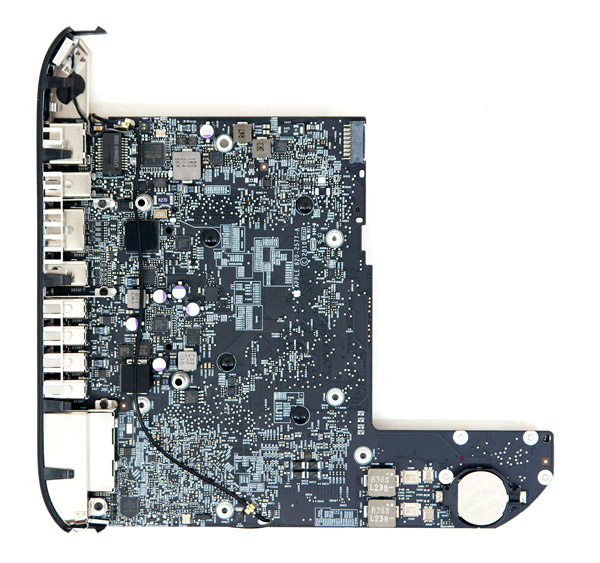










93 Comments
View All Comments
MonkeyPaw - Monday, August 9, 2010 - link
I don't understand why it has to keep getting smaller and smaller. The original Mini is by no means a monster. I remember setting an old FX5900 on my old G4 mini, and I laughed that the card stuck out about 2" on each side.I guess my point is that I would have rather seen Apple boost the specs all around as opposed to shrinking the package (and raising the price). Apple continues to miss the boat (at least my boat, anyway) when it comes to price/features. I just don't think Apple cares about market share. They want to continue to sell overpriced items to a smaller audience. I guess that's fine, as they seem to make nice profits doing so. But the original Mini made me buy my first mac, and eventually I bought an iBook and a dual-G5. The dual G5 became mysteriously crash-happy, and I haven't been back since. Appke just can't draw me back in yet, not with this price/product.
thunng8 - Thursday, August 12, 2010 - link
That is not correct anymore these days. Modern 7200rpm 2.5" hard drives are only marginally hotter than the 5400rpm variety. It would make no difference in a mac mini enclosure.woutersamaey - Monday, August 9, 2010 - link
It would've been nice to read more on the Mac Mini with Mac OS X Server. To my opinion, it looks like an interesting SOHO server. It has faster (2 of them) 7200 rpm disks and 4 GB of RAM.solipsism - Monday, August 9, 2010 - link
Anand wrote, "With no DMI/QPI enabled NVIDIA chipsets, Apple is either going to have to increase the physical size of many of its products to transition to newer Intel CPUs with 3rd party GPUs or live with Intel/AMD integrated graphics going forward. I'm very curious to see how this plays out over the next 12 - 18 months.”There is plenty of space when they remove the ODD. It’s obvious they aren’t going to move to Blu-ray if they haven’t in August 2010 and haven’t even added AACS to Mac OS X.
The ODD is large, slow, prone to breaking and goes unused by most consumers these days. To put it into perspective takes up 25% of the 13” MB/MBP footprint, as well as 5” of port-side space which all Mac notebooks could use.
On top of that, there is no 9.5mm Ultra-Slim Slot-Loading BRD that would be feasible for the needs of a company obsessed with thin.
Honestly, Anand, if they haven’t added AACS to Mac OS X, added the option to their Mac Pros with full-sized ODDs, and left their optical disc authoring apps to rot why would you even expect this to arrive in such a svelte machine as the Mac Mini.
Ratman6161 - Tuesday, August 10, 2010 - link
...because that isn't what this system uses. Take a look at the page in the review where they show pictures of the system torn down and talk about the Nvidia GeForce 320M and go on to say "The 320M has the graphics, memory controller, SATA controller, PCIe and USB interfaces. " The 320M seems to be a common part on Windows based laptops so it's nothing special - but it isn't Intel.larson0699 - Wednesday, August 11, 2010 - link
@solipsism: The new mini also has a server edition ($1k, apple.com/macmini/server), 2 HDD, no ODD, though none of that open vertical space helps the limited real estate of the motherboard itself.@Ratman6161: As far as I can tell, only Apple has used the GeForce 320M thus far -- you may have mistaken that for the GeForce GT 320M, the former being an IGP and the latter a discrete GPU. Notebookcheck is a great place to compare mobile GPUs by specs, 3DMark scores, and their uses among OEMs, and that's where I learned of the similarly named IGP.
mschira - Monday, August 9, 2010 - link
How does the Mac mini fare with a contemporary medium demading game, such as Starcraft 2?Best
M.
jabber - Monday, August 9, 2010 - link
For that price and application I would want a BD drive in it.I mean a BD drive would be what? An extra $50 (real world price) bu then the Apple price would be an extra $200.
Hmmmm.
Johnmcl7 - Wednesday, August 11, 2010 - link
Not just the cost but also a threat to streaming HD content from Itunes which seems to be another reason for not having blu-ray according to Steve Jobs.I agree with you though hence I bought a Dell Studio Hybrid which is a very similar machine in that it uses laptop component but it also has a blu-ray drive - I'm surprised it didn't get a mention at all in the article.
John
PrincePickle - Monday, August 9, 2010 - link
At least Apple is concentraiting on bringing decent GPU's to their lineups. The industry as a whole has been slacking with educating consumers on the benifits of discrete GPU's.